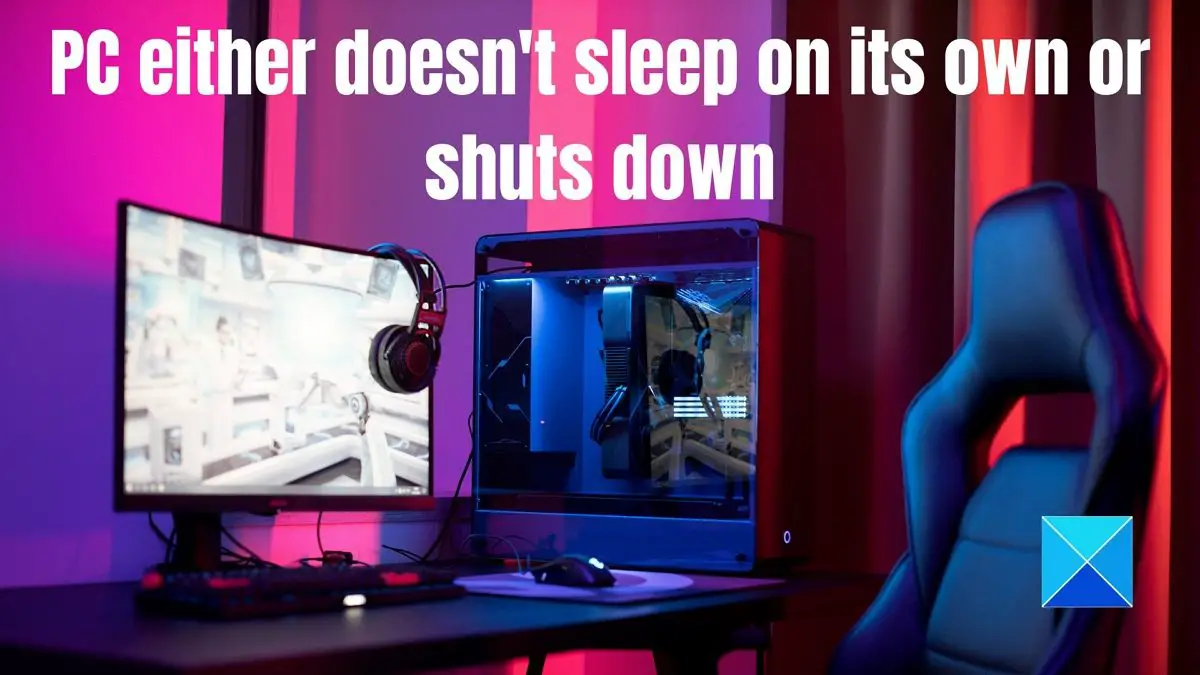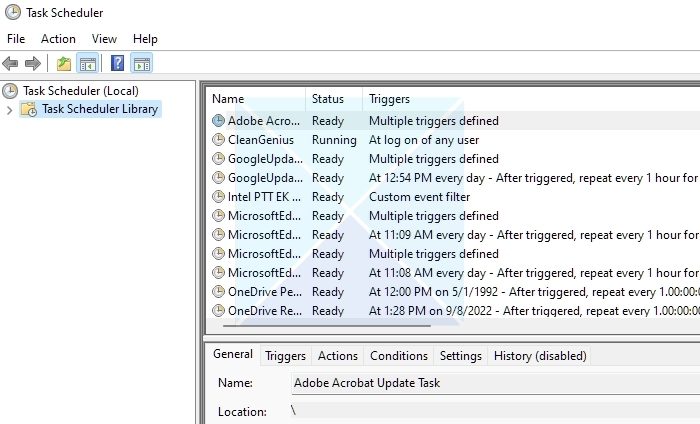Windows PC shuts down after manually going to sleep
If your Windows 11/10 computer doesn’t sleep on its own or shuts down after manually going to sleep, here are some suggestions to help you resolve the issue: You will need admin permission and a decent understanding of how power plans work on your PC.
1] Check External USB devices connected to the PC
If you have USB devices apart from a keyboard and mouse, you need to check on all of them. Unplug them, and check the behavior changes. At times the USB devices keep doing things in the background that wake up the PC. For example, if you have a USB Bluetooth adaptor connected to the game controller, both may try to connect and keep waking up the PC. You can try to change the USB port or set a time out for such devices, so they don’t try to connect after every few minutes. One of the users reported that plugging a USB-C to USB-2 on a USB 3 port to the back of the motherboard causes all sorts of confusion for the whole system. So if you are in a similar situation, disconnect them, and check. Read: Windows PC does not Sleep
2] Check Scheduled Tasks
Do you have a scheduled task that runs in the background and can also wake up your PC? It is possible that you never created it, but maybe a backup software has scheduled for a backup with the option to wake up your PC.
Open Run prompt using Win + RType taskschd.msc and press the Enter key to open Task Scheduler.Check the triggers column, and look at the time for each task.If you notice anything that is out of place or matches up with the time you face the error, disable the task, and check for the issue.
Read: Windows computer goes to Sleep too early
3] Run powercfg -requests command
PowerCFG is a command-line tool in Windows that can diagnose power-management issues. It works perfectly for this situation where the user is unsure why a computer woke or why the screen is not turning on, and so on.
Right-click on the Start button, and click on Windows Terminal (Admin) or Command Prompt (Admin)Once it opens, execute the powercfg -requests command and wait for the result.The command will enumerate application and driver Power Requests.Note the program’s name, and check if you can stop the process from running in the background.
Note: Power Requests list applications that prevent the computer from automatically powering off the display or entering a low-power sleep mode. Read: Prevent Computer from waking up from Sleep
4] Check Power Plan on Laptops
Laptops have strict power plans, ensuring the battery lasts longer than usual. However, many users always keep their laptops connected to the power source. Some users also change the power plan to Ultimate Performance which keeps the PC awake.
Open Windows Settings using Win + INavigate to System > Power & batteryClick on the dropdown next to Power mode, and switch it to balanced or best power efficiency.
These modes will ensure that the laptop display doesn’t stay on all the time and goes to sleep if not used for some time. Read: Windows will not wake up from sleep mode
4] Reset Power Plan settings
If nothing else works and no background apps and devices are causing the problem, the last option is to reset the power plan settings. The best way to do this is using the powercfg command.
Open Windows Terminal with admin permissionType and execute the command powercfg –restoredefaultschemesLet the process complete, and all your power plans will return to the default values that Windows offers.
It will change the laptop’s default power plan and even the configurations that Windows allows the end user to control. You may have changed some of the settings causing the problem, and the reset will fix it.
While it is annoying when the PC either doesn’t sleep on its own or shuts down after manually going to sleep, I hope this post was easy to follow and that you were able to fix the problem for good. Read: Windows computer wakes from sleep automatically
Which is the best power plan for a laptop?
It depends on how you want to use the laptop. If you are looking for solid performance, and keep the laptop constantly plugged in, then you can use the High-performance mode. However, use the Power saver when traveling and wanting to keep the battery running for a longer duration. Read: Wake up the computer from Sleep, at a particular time
Does power saving mode affect performance?
Yes, it does. The CPU speed is cut down when in Power Saver mode, affecting the overall performance. Make sure not to play games in this mode because the GPU speed will also be limited. Read: Hibernate or Sleep shuts down the computer running Windows
How do I adjust my computer for the best performance?
When it comes to the power plan, you need to choose the Ultra performance, but there are options. You need to make sure you have enough space. A gaming PC needs to be adequately cooled. There should be enough memory to run high-resource apps and games.
Where is Power Management in the device manager?
Some devices listed in Windows Device Manager have a Power Management tab in the properties section. You can choose to allow the computer to turn off this device to save power and allow the device to wake up the PC. Features such as Wake On Lan only work when they are allowed to wake up the device. Read: Prevent Hard Disk from going to sleep.


